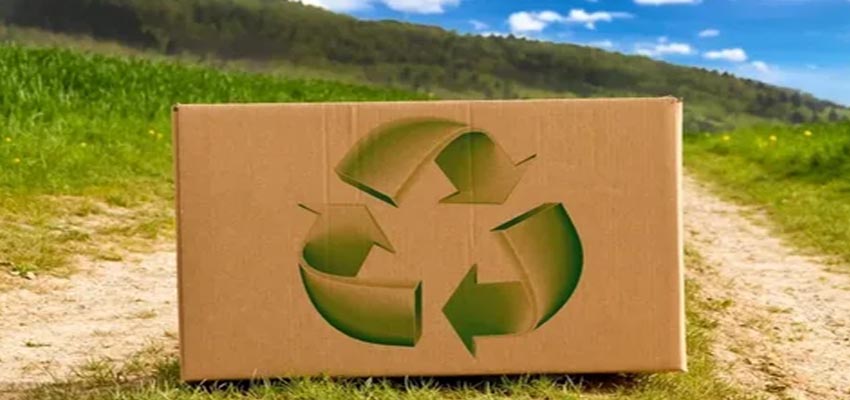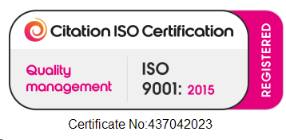E-commerce is booming, with millions of packages being shipped daily. However, this rapid growth has also led to a significant increase in packaging waste, contributing to environmental concerns. As consumers become more eco-conscious, businesses must adapt by adopting sustainable packaging practices that reduce environmental impact without compromising protection and branding.
In this article, we explore the best practices for sustainable packaging in e-commerce, helping businesses make responsible choices while maintaining efficiency and customer satisfaction.
Why Sustainable Packaging Matters in E-commerce
1. Environmental Responsibility
Traditional packaging materials, such as plastic and Styrofoam, contribute to pollution and landfill waste. Sustainable alternatives help reduce carbon footprints, making a positive impact on the planet.
2. Consumer Expectations
Modern consumers prefer eco-friendly brands. A recent study found that 81% of global consumers feel strongly that companies should help improve the environment. Using sustainable packaging can attract and retain eco-conscious customers.
3. Cost Efficiency
While sustainable materials may seem costly upfront, they often lead to long-term savings. Lightweight, recyclable, and biodegradable materials reduce waste disposal costs and improve shipping efficiency.
4. Regulatory Compliance
Governments worldwide are enforcing stricter packaging waste regulations. Adopting sustainable packaging ensures compliance with environmental laws and avoids potential fines.
Best Practices for Sustainable Packaging in E-commerce
Implementing sustainable packaging requires strategic planning. Below are the best practices that e-commerce businesses can adopt to create an eco-friendly and cost-effective packaging system.
1. Use Recyclable and Biodegradable Materials
Replacing traditional plastics with eco-friendly materials is the first step toward sustainability.
Recommended Sustainable Materials
| Material | Benefits |
| Corrugated Cardboard | 100% recyclable, biodegradable, lightweight |
| Mushroom Packaging | Made from agricultural waste, compostable |
| Cornstarch Packaging | Biodegradable, reduces reliance on fossil fuels |
| Recycled Paper | Reduces deforestation, recyclable, compostable |
| Bioplastics | Made from renewable sources like corn starch |
| Hemp-based Packaging | Durable, biodegradable, and sustainable |
Switching to these materials helps reduce environmental impact while ensuring product protection.
2. Right-Sizing Packaging for Minimal Waste
Excessive packaging contributes to waste and increases shipping costs. Right-sizing packaging involves using the smallest possible package while still protecting the product.
How to Implement Right-Sizing
- Custom-fit boxes that reduce empty space.
- Minimize fillers by using structured inserts instead of excessive wrapping.
- Automated box-sizing machines to optimize packaging based on product dimensions.
- Foldable and flexible packaging to accommodate different product sizes.
This practice not only reduces waste but also lowers material and shipping costs.
3. Reduce Single-Use Plastic
Plastic pollution is one of the biggest environmental challenges. E-commerce businesses should focus on reducing plastic dependency and switching to compostable alternatives.
Alternatives to Plastic Packaging
- Compostable mailers made from plant-based materials.
- Paper-based void fillers instead of plastic air pillows.
- Biodegradable packing peanuts that dissolve in water.
- Glassine bags (wax-paper alternatives) for lightweight protection.
These alternatives help companies move toward zero-waste packaging solutions.
4. Implement a Circular Packaging Economy
The circular economy focuses on reusing, recycling, and repurposing materials rather than discarding them after a single use.
Ways to Adopt a Circular Economy Approach
- Encourage customers to return packaging for reuse.
- Partner with recycling companies to repurpose used packaging.
- Design multi-use packaging that customers can reuse for storage.
- Use water-soluble or compostable mailers that decompose naturally.
By integrating closed-loop systems, businesses can minimize waste and lower costs.
5. Use Sustainable Printing and Labeling
Printing and labeling contribute significantly to packaging waste. Switching to eco-friendly printing options reduces the carbon footprint.
Eco-Friendly Printing Methods
- Soy-based inks instead of petroleum-based inks.
- Water-based adhesives for biodegradable labels.
- Recyclable paper labels instead of plastic stickers.
- Minimalistic branding to reduce ink and resource consumption.
These methods help businesses maintain brand aesthetics while ensuring sustainability.
6. Optimize Shipping Efficiency
Shipping lighter and compact packages reduces transportation emissions. Implementing smart shipping strategies can enhance sustainability.
Shipping Efficiency Practices
- Flat-pack designs to reduce space consumption.
- Bulk shipping consolidation to lower carbon footprint.
- Eco-friendly courier partnerships with carbon-neutral shipping services.
- Paperless invoicing and digital receipts to minimize waste.
This ensures lower transportation costs while promoting sustainability.
7. Offer Packaging Disposal Guidelines to Customers
Even the most eco-friendly packaging can be ineffective if customers don’t dispose of it properly. Providing clear recycling instructions helps consumers make responsible choices.
How to Guide Customers
- Include QR codes that link to recycling guides.
- Print disposal symbols on the packaging.
- Educate customers on composting biodegradable packaging.
- Offer return-and-reuse programs for packaging materials.
Proper disposal ensures that packaging waste is managed effectively.
8. Encourage Sustainable Packaging Initiatives
Businesses can go beyond their packaging efforts by engaging in sustainability programs.
Ideas for Sustainable Initiatives
- Offer incentives for customers who choose minimal packaging.
- Participate in tree-planting programs for every order placed.
- Partner with eco-conscious suppliers for sustainable materials.
- Commit to net-zero waste goals for packaging.
Such initiatives enhance brand reputation and create a positive environmental impact.
Conclusion
Sustainable packaging in e-commerce is not just a trend—it’s an essential shift toward a greener future. By adopting recyclable materials, reducing plastic use, optimizing packaging size, and engaging customers in sustainability efforts, businesses can significantly reduce their environmental impact.
With increasing consumer demand for eco-friendly practices, brands that invest in sustainable packaging today will gain customer loyalty, cost savings, and a competitive edge in the e-commerce market.
If your e-commerce business is ready to embrace sustainable packaging, explore innovative packaging solutions at SafePackagingUK and take the first step towards an eco-friendly future!







